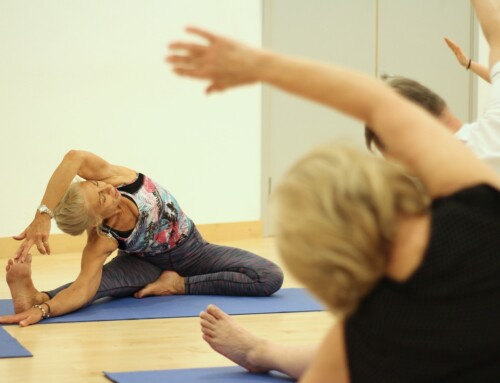Caring for someone with dementia at home can be both rewarding and challenging. One effective way to support their emotional and cognitive well-being is through sensory stimulation. Sensory exercises help people with dementia connect to the world around them by engaging the five senses—sight, sound, touch, smell, and taste. These activities can trigger memories and cultivate a comforting atmosphere.
Here are simple, gentle sensory exercises that can be done at home with minimal equipment (and lots of love.)
Touch-Based Sensory Activities
- Use a gentle lotion or cream with a mild scent like lavender or chamomile for a calming hand massage. Slowly massage their hands, focusing on the fingers, palms, and wrists. This can be very relaxing and provides a moment of close connection.
- Fill a small basket with objects of different textures—like a soft scarf, a smooth stone, a sponge, a rough pine cone, or a squishy stress ball. Let them explore the items one at a time, describing how each one feels.
- Warm a towel in the dryer and gently wrap it around their shoulders or hands. The warmth and pressure can bring a sense of comfort and safety.
Sight-Based Sensory Exercises
- Look through old family photo albums together. Ask simple questions like, “Do you remember this place?” or “Who is this?” Even if they can’t recall, the visual stimulation can be soothing.
- Set up a comfortable chair near a window where they can watch birds, trees, or passersby. You can also use bird feeders or wind chimes to add movement and gentle sound.
- Offer simple coloring books or water painting kits to stimulate creativity and focus.
Sound-Based Activities for the Senses
- Create a playlist of songs they loved in their youth. Play it at a comfortable volume and see if they respond by humming, tapping, or smiling. Music from teenage years often triggers the strongest memories.
- Play recordings of ocean waves, rain, or birdsong. These natural sounds can have a calming effect and help reduce stress or agitation.
- If they’re able and interested, sing simple songs together. Familiar tunes like nursery rhymes or hymns often come back even when other memories fade.
Smell-Based Sensory Activities
- Fill small jars with everyday items like ground coffee, orange peel, cinnamon sticks, or vanilla. Let them smell one at a time and talk about what it reminds them of.
- A few potted herbs on a windowsill (like mint, basil, or rosemary) can be fun to touch and smell. Gently rubbing a leaf between fingers releases the scent.
- Involve them in simple baking, even if it’s just watching or helping stir. The smell of cookies or bread baking can be very nostalgic.
Taste-Based Sensory Exercises
- Offer small tastes of familiar and favorite foods—like a slice of banana, a piece of cheese, or a spoonful of applesauce. Talk about what each one tastes like—sweet, salty, creamy, for instance.
- Let them help with safe, small tasks like spreading jam on toast or stirring a bowl. This gives a sense of purpose and satisfaction.
- Set up a little tea break with their favorite tea and a light snack. The ritual of sipping tea can be very soothing.
Alzheimer’s Care and Sensory Exercises
Sensory exercises don’t need to be structured or perfect – what matters most is creating moments of connection, comfort, and calm. Try different activities at different times and see which ones they enjoy most. Even short sessions of sensory stimulation can brighten their day and help them feel more grounded and secure.
Always be gentle, patient, and flexible. What works one day may not work the next—and that’s okay. If you feel it is time for professional care, you can trust the compassionate caregivers at A Banyan Residence to provide the peace of mind you need. Come visit our community in The Villages – and don’t forget to ask about our multi-sensory room.








